On the afternoon of October 8, the Royal Swedish Academy of Sciences announced that the 2025 Nobel Prize in Chemistry went to three scientists, Susumu Kitagawa, Richard Robson and Omar M. Yaghi, for their pioneering contributions to the development of metal-organic frameworks (MOFs).
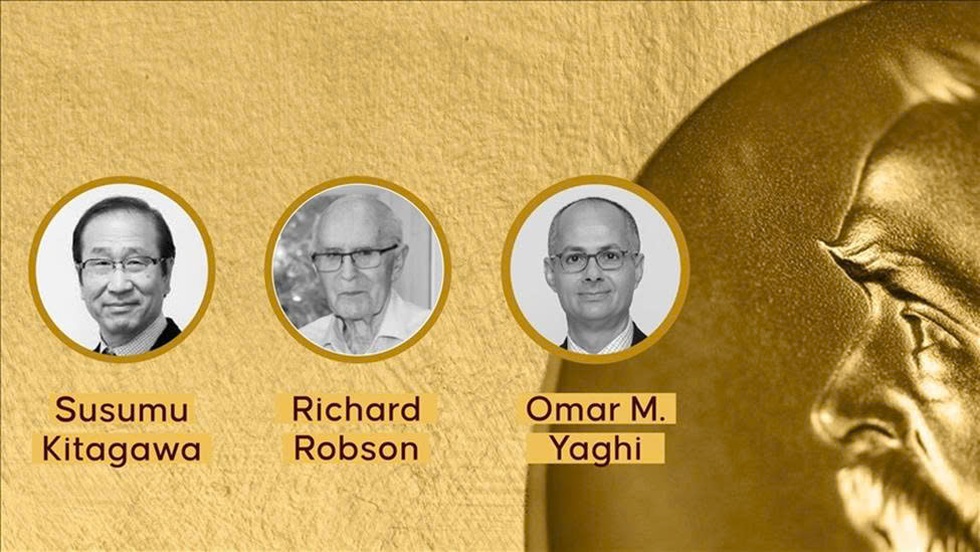
Portraits of the three scientists who won the 2025 Nobel Prize in Chemistry.
According to the Nobel Assembly, this is a turning point for the formation of a completely new language of materials science. Metals and organic compounds are intricately connected to form porous networks capable of storing, separating and transforming molecules - a direction considered revolutionary in modern energy, environmental and chemical technology.
The magical combination of metal and organic
Metal-organic frameworks are crystalline structures made up of metal ions or metal clusters linked to organic linkers in an ordered, repeating structure, forming a three-dimensional network.
In the space between the metal nodes and the bonding molecules, there are large voids, making this material extremely porous. Unlike traditional solid materials, the surface area of metal-organic frameworks can reach thousands of square meters per gram.
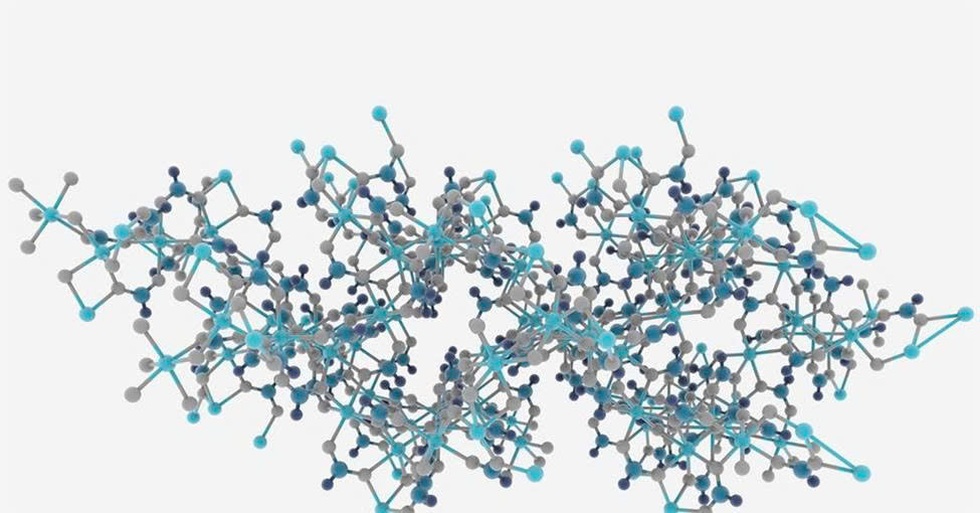
Hollow structure inside metal-organic framework (Photo: MOF Technologies).
Speaking to Chemistry World magazine in 2017, Professor Omar Yaghi said that the porosity of some MOFs can reach 10,000 m2/gram (10 times larger than other porous materials), one gram of MOF can possess an internal surface area equivalent to about two American football fields. It is this characteristic that gives MOFs the ability to adsorb, store or separate molecules in a controlled manner, much superior to other porous materials such as zeolite or silica.
According to the Nobel Committee, these are “materials with unprecedented porosity in nature, yet still maintain the stability and sustainability of their crystalline structures.” Thanks to the ability to combine the flexibility of organic compounds with the durability of metals, metal-organic frameworks have become one of the most important inventions of 21st-century chemistry.
From idea to scientific revolution
The development of metal-organic frameworks is a story spanning more than three decades, starting with the first experiments of Richard Robson at the University of Melbourne (Australia) in the late 1980s.
He pioneered the construction of the first metal-organic frameworks, realizing that bonding metal ions to organic molecules could create crystalline structures that extended in one, two, or three dimensions. However, these early materials were often unstable and collapsed when exposed to solvents or high temperatures.
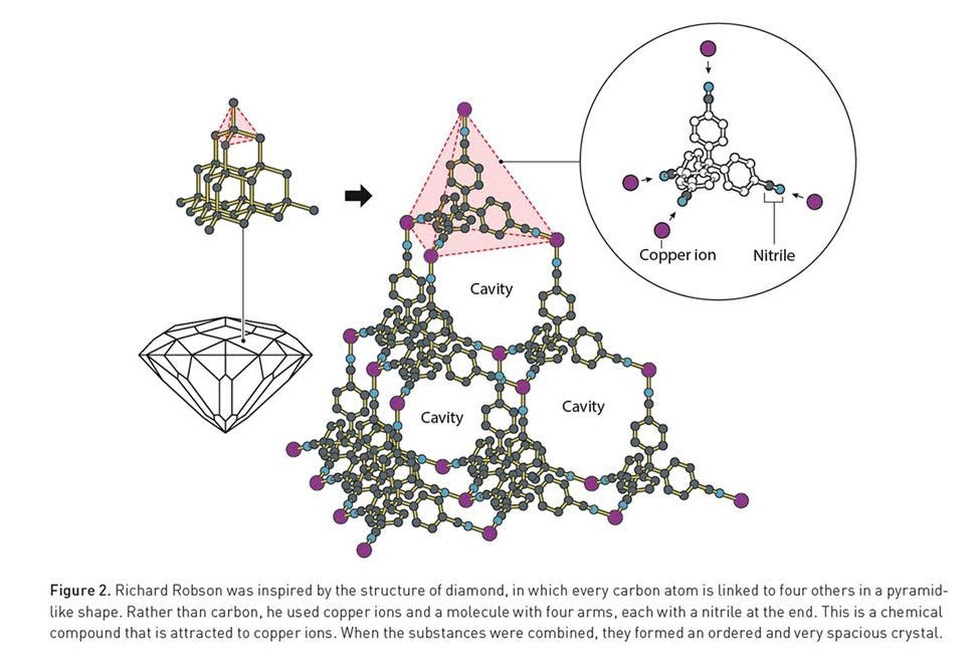
Metal ions and organic molecules are carefully combined to form a structure similar to a metallic tetrahedral framework (Image: The Royal Swedish Academy of Sciences).
By the mid-1990s, Susumu Kitagawa, then at Kyoto University, had demonstrated that gas could penetrate and move inside the metal-organic crystal frameworks he had created. This was a major breakthrough, demonstrating for the first time that solid materials could dynamically interact with their surroundings.
Also during this period, Omar M. Yaghi, a young American chemist, developed a synthesis method that produced stable, thermally stable metal-organic frameworks with precisely defined structures. He laid the foundation for the concept of “reticular chemistry” – an approach that allows the intentional linking of molecular building blocks to form crystalline lattices with predetermined properties.
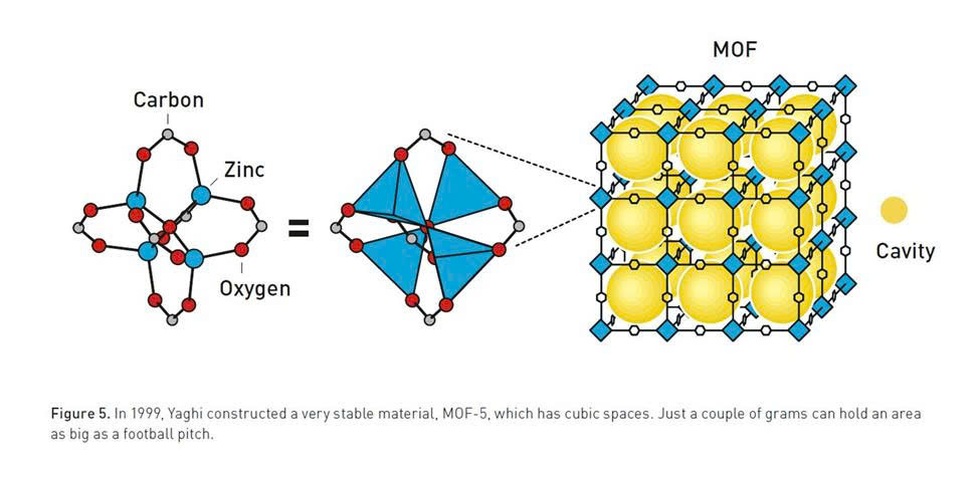
The structure of a stable material, MOF-5 - created by Yaghi - has cubic spaces (Image: The Royal Swedish Academy of Sciences).
Thanks to the contributions of three scientists, this new field of research has developed into an independent direction in modern materials chemistry, with tens of thousands of metal-organic framework structures synthesized and applied in many high-tech fields.
Extended applications of the invention of the century
The research demonstrates that, thanks to their “porous yet strong” properties, metal-organic frameworks can take on many roles that were previously impossible for solid materials.
The Nobel Committee's press release said that metal-organic frameworks can be used to adsorb and store CO₂ in their porous structures, helping to reduce greenhouse gas emissions. Some metal-organic frameworks can capture water vapor from dry, desert air, using only the natural humidity in the air, converting solar energy into clean water. This is considered a particularly useful technology for areas with scarce water resources.
Thanks to their high surface area and selectivity, MOFs are also used to filter out volatile organic compounds, remove heavy metals or toxic chemicals from wastewater, and separate noble gases such as helium or hydrogen. Scientists are now exploring metal-organic frameworks for energy storage, especially hydrogen and methane – two potential clean fuels.
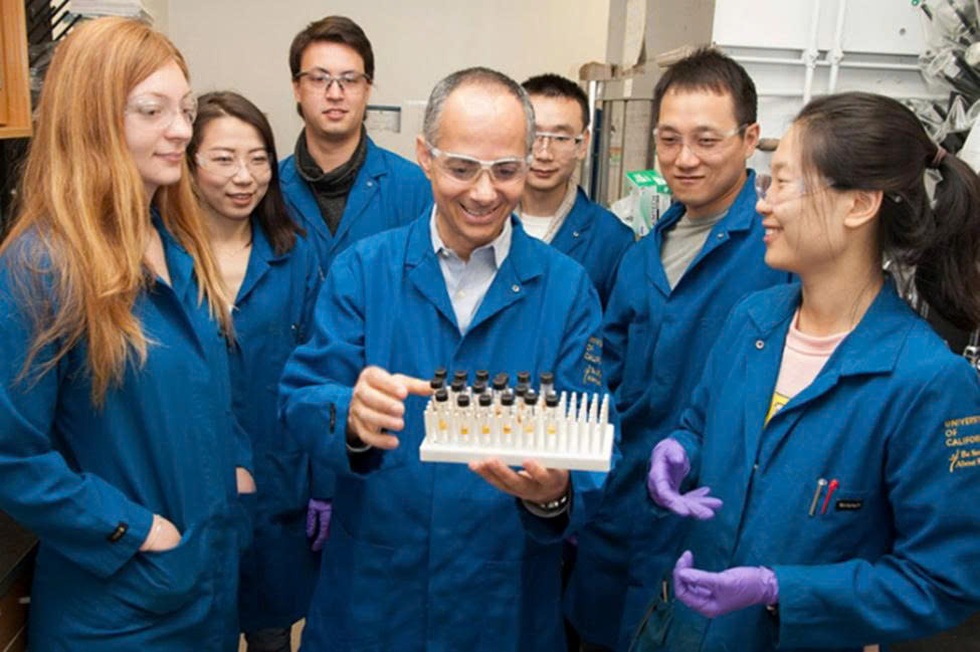
Members of the Yaghi research lab (Photo: University of California, Berkeley).
It is worth noting that Professor Omar Yaghi also won the VinFuture Prize in 2021, in the category “Innovators With Outstanding Achievements In Emerging Field” (scientists researching new fields).
Research on MOFs is also considered a potential development direction for Vietnam, as the country is promoting green transformation and developing advanced materials for the energy, environmental and biomedical industries.
Through programs like VinFuture InnovaConnect, Vietnamese scientists have the opportunity to connect directly with the international research community, expanding cooperation in emerging fields such as MOFs, next-generation batteries or carbon capture.

Professor Omar Yaghi at the first VinFuture Prize Award Ceremony.
During the announcement of the 2025 Nobel Prize, Professor Heiner Linke, Chairman of the Nobel Committee for Chemistry, said:
“Metal-organic frameworks have enormous potential, opening up unprecedented opportunities to create engineered materials with customized properties for new purposes.”
These materials promise to help solve global challenges such as air pollution, climate change, lack of clean water, and renewable energy storage – problems facing humanity in the 21st century.
Message from the Nobel Prize in Chemistry 2025
The 2025 Nobel Prize in Chemistry not only honors three outstanding scientists, but also sends a profound message, a new way of thinking in materials science: the "empty" is no longer just a meaningless void, but is full of potential.
From a scientific perspective, the invention of metal-organic frameworks represents a shift from material discovery to the creation of new materials. Humans are no longer completely dependent on nature, but can design new materials with structures and functions for a certain purpose.
The influence of metal-organic frameworks does not stop at current applications, but also paves the way for the development of a new generation of materials, such as: Covalent Organic Frameworks (COFs) and Zeolitic Imidazolate Frameworks (ZIFs) - with similar, or even superior, capabilities in the future.
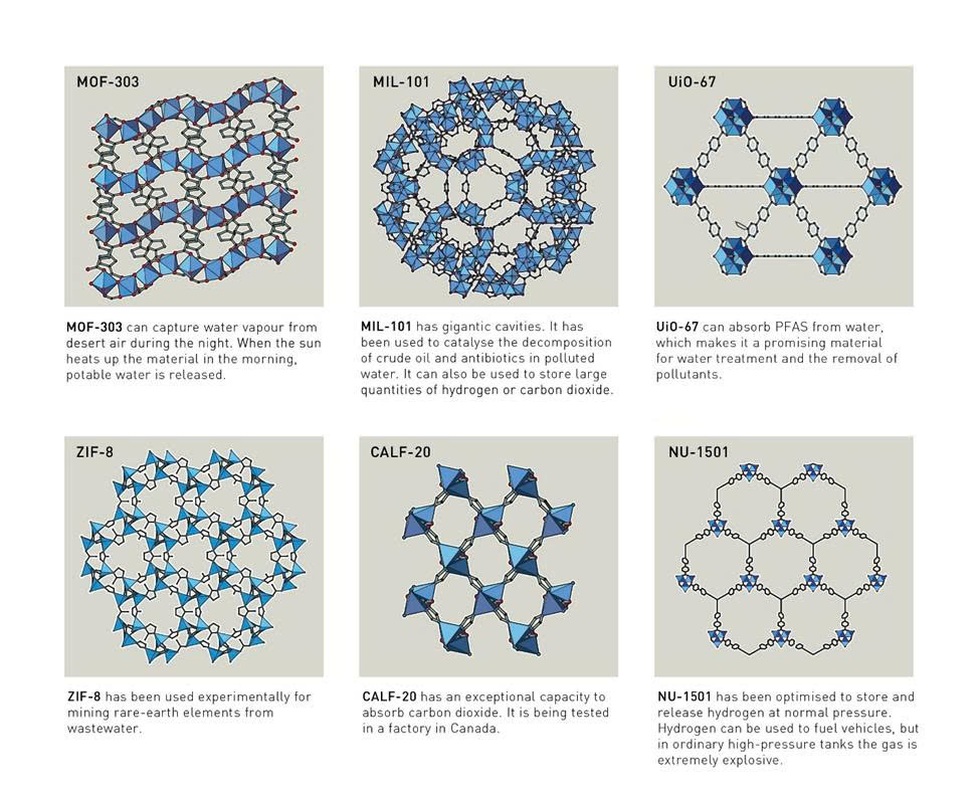
Many other types of MOF structures have been synthesized, each serving its own functions (Photo: The Royal Swedish Academy of Sciences).
From the small labs where the first crystals were grown, to the vision of material systems that can filter toxic gases, “squeeze water” from the air, and store energy, the journey to develop metal-organic frameworks exemplifies the spirit of modern science: innovation, interdisciplinary collaboration, and a drive for sustainable value.
Source: https://dantri.com.vn/khoa-hoc/vat-lieu-rong-chia-khoa-giup-cac-nha-khoa-hoc-gianh-nobel-hoa-hoc-2025-20251009215157748.htm


![[Photo] Standing member of the Secretariat Tran Cam Tu works with the Standing Committee of the Party Committee of the Ministry of Health](https://vphoto.vietnam.vn/thumb/1200x675/vietnam/resource/IMAGE/2025/10/10/1760079818773_image-4-6972-jpg.webp)


![[Photo] "Exposing letters" in the flood center of Lang Son](https://vphoto.vietnam.vn/thumb/1200x675/vietnam/resource/IMAGE/2025/10/10/1760080117518_ndo_br_z7101324112737-07cd4d1c01801a8ccf4ae0cbaf31c4a3-507-jpg.webp)
![[Photo] Unique Phu Gia horse hat weaving craft](https://vphoto.vietnam.vn/thumb/1200x675/vietnam/resource/IMAGE/2025/10/10/1760084018320_ndo_br_01-jpg.webp)







































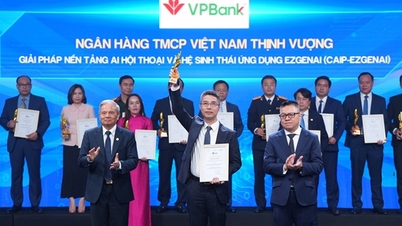


























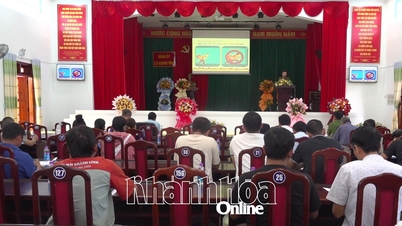






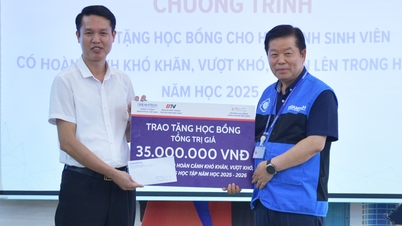














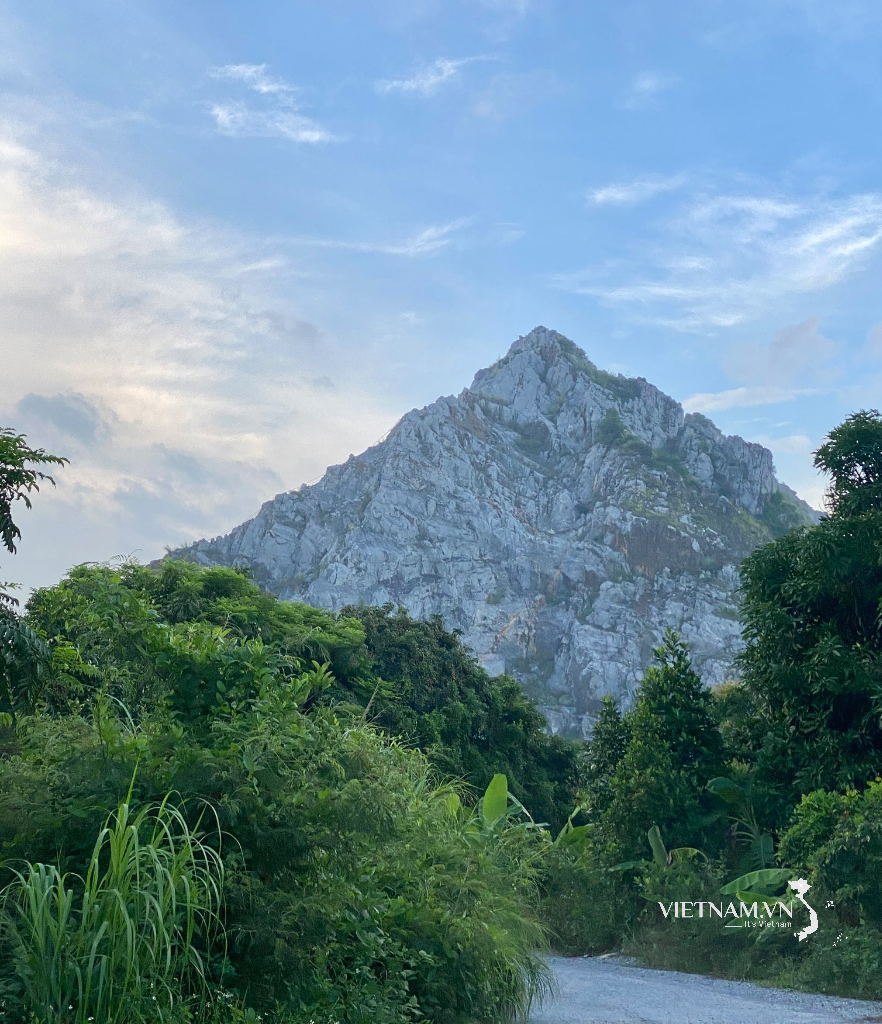
Comment (0)